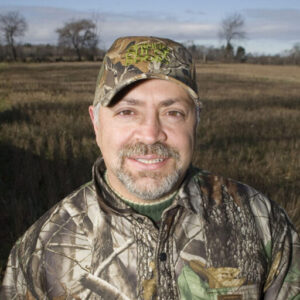Not long ago, hunting groundhogs was a rite of passage for young hunters. In the 1980s, woodchucks (members of the marmot family) were abundant. As a teen, I was one of many hunters chasing them with my lever-action Marlin 39 on the farm behind my home. The pursuit taught me valuable skills: long-range accuracy, holdovers with my four-power scope, using the terrain to close the distance, and improving my shooting reflexes. For most, a rimfire .22 was the gun of choice, while the serious hunters opted for small centrefire cartridges for improved accuracy. Groundhogs are naturally wary, and will race back to their burrows before you had a chance to pull the trigger. A right of passage Where I hunted, groundhogs made their home at the edge of a gulley. The farmer wanted them thinned out to prevent further erosion of the fields. Plus, the groundhogs ate the young winter wheat shoots in spring. My experience was shared across southern Ontario. “The varmints were numerous and caused problems for farmers, so hunters were welcomed with open arms,” said Mike Miller, host of Angler and Hunter TV, who grew up around the Kawartha Lakes and hunted near Peterborough, Lindsay, and Tweed. Miller’s approach was to cruise backroads, look for farms with groundhogs, then ask for permission. In his region, there were more livestock farms and pastureland than in my part of the province. “A lot of farmers said yes,” he recounted. “Back in the day, farmers would gladly let you hunt groundhogs. Cattle and animals stepping in holes and breaking their legs was a thing.” Dan Elliott, a hunter safety instructor and retired Ministry of Natural Resources (MNR) employee now living in Aylmer, grew up hunting groundhogs in southeastern Ontario near Iroquois in the 1960s and ‘70s. “There were a lot of groundhogs back then,” he said. “We hunted them because they were a nuisance to farmers. They dug holes, ate crops, and left dirt piles that were a hazard to horses and farm machinery.” The decline I rarely see groundhogs in Oxford and Norfolk counties these days, and when I do, it’s usually in urban areas. Elliott remembers a time when groundhogs were still plentiful. But after moving to southwestern Ontario in 1991, he noticed a significant decline in sightings. He believes the decline started in the 1980s. “It was consistent with the jackrabbit population,” he said. When Port Elgin
Please log into your OFAH Community account to access this content. Not an OFAH member or Ontario OUT of DOORS Subscriber? Follow the links below to join or subscribe and gain access to exclusive online content.





Contact Information
PO Box 2800 / 4601 Guthrie Dr.
Peterborough, Ontario Canada K9J 8L5
Phone: 705-748-OFAH (6324)
Fax: 705-748-9577
Join Our Newsletter
Watch
Shop
Follow